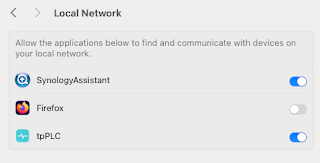Geeking in technology since 1985, with IBM Development, focused upon Docker and Kubernetes on the IBM Z LinuxONE platform In the words of Dr Cathy Ryan, "If you don't write it down, it never happened". To paraphrase one of my clients, "Every day is a school day". I do, I learn, I share. The postings on this site are my own and don’t necessarily represent IBM’s positions, strategies or opinions. Remember, YMMV https://infosec.exchange/@davehay
Friday, 31 July 2009
IBM HTTP Server as a Reverse Proxy for IBM Lotus Quickr Services for Lotus Domino 8.2
Thursday, 30 July 2009
WebSphere Portlet Factory 6.1.2 and Rational Application Developer 7.5 Together
Application Developer together, I thought it'd be helpful to provide
screenshots of the deployment configuration screens for WebSphere
Application Server and WebSphere Portal; these screens are seen when a
new WPF project is created, and are used to map to the underlying WAS/ WP test environment: -*UPDATE* Although I've not yet tried this, I'm told that RAD 7.5 fixpack 3 *MAY* cause some conflicts with WPF - I'll try this at some point hopefully soon ( on a VMware so that I can roll back ) and post an update here once I know more *UPDATE*
Sunday, 19 July 2009
Lotus Connections 2.0.1 and WebSphere Portal 6.1 Together
IBM WebSphere Portal and Lotus Web Content Management search: Essentials and best practices
Thursday, 16 July 2009
HTTP 501 Not Implemented when attempting to administrator Sametime 8.0.2
Wednesday, 15 July 2009
Excellent new blog from IBM's Java team ....
</snip>
Enjoy !
Sunday, 12 July 2009
Automagically starting Domino on Linux
Using Domino Web Administrator to register new users
It's worth noting that (a) I'm NOT a Domino guru and (b) this may well
be a work-in-progress.
Therefore, please use extreme caution if you choose to follow this,
and let me know where I've gone wrong :-)
</CAVEAT>
It's been bugging me for a long while that I need to fire up the
Domino Administrator client each time I want to register new users,
when I'd much rather use the Web Administrator ( webadmin.nsf ).
Well, today, I finally managed to achieve my goal, and have documented
my steps as follows: -
a) Open Domino Administrator and log in as admin. user e.g. domadmin/ibm
b) Choose File -> Open Server and choose server to be managed e.g.
voyager/ibm
c) Choose Configuration -> Tools -> Certification -> Migrate Certifier
d) Navigate to server's cert.id on file system ( may need to copy it
from server to client )
e) Enter certifier password ( created when server first installed )
f) Select the server on which the certifier will run e.g. voyager/ibm
g) Note that ICL DB to be created e.g. icl`icl_1926.nsf
h) Choose to encrypt certifier ID with Locking ID and select domadmin/
ibm from the IBM directory
i) Note that the domadmin/ibm user has CAA and RA roles
j) Click Add
k) From IBM directory, choose to add server e.g. voyager/ibm
l) Again, note that voyager/ibm has CAA and RA roles
m) Click on OK
n) Ensure that ADMINP and CA tasks are started/running on Domino server
o) Check admin4.nsf DB for task Modify CA Configuration in Domino
Directory and ensure that it completed without errors
<CAVEAT>
It's worth noting that (a) I'm NOT a Domino guru and (b) this may well
be a work-in-progress.
Therefore, please use extreme caution if you choose to follow this,
and let me know where I've gone wrong :-)
</CAVEAT>
Saturday, 11 July 2009
Wierdness when creating DB2 Administration Server (DAS) on Red Hat Enterprise Linux 5
Thursday, 9 July 2009
EJPPG1009E when attempting to create/use Lotus Sametime Web Conferencing via a portlet
Wednesday, 8 July 2009
Mounting the mounting mountain
JNDI - Getting access to the namespace on WebSphere Application Server 6.1
Tuesday, 7 July 2009
Lotus Connections not starting ? LDAP OK ? Check DB2 ...
Sunday, 5 July 2009
Lesson to self - read and reread your own blog posts
Disabling Firewall on Red Hat Enterprise Linux 5
Saturday, 4 July 2009
IBM Software Brand Catalogs
Thursday, 2 July 2009
Fun when running DB2 CLP scripts
Wierdness when installing Lotus Quickr Services for WebSphere Portal 8.1.0
Note to self - Firefox and local connections
Whilst trying to hit my NAS from Firefox on my Mac, I kept seeing errors such as:- Unable to connect Firefox can’t establish a connection t...

-
Error "ldap_sasl_interactive_bind_s: Unknown authentication method (-6)" on a LDAPSearch command ...Whilst building my mega Connections / Domino / Portal / Quickr / Sametime / WCM environment recently, I was using the LDAPSearch command tha...
-
Another long story cut short, but I saw this: - curl: (58) unable to set private key file: 'dave.pem' type PEM from my Ansible...
-
Whilst trying to hit my NAS from Firefox on my Mac, I kept seeing errors such as:- Unable to connect Firefox can’t establish a connection t...
